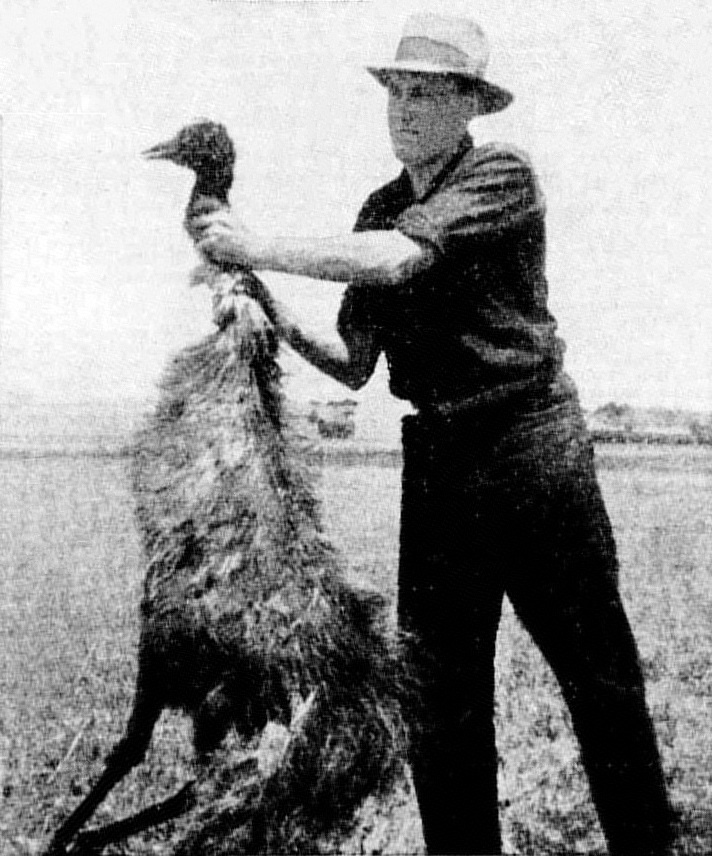In the sun-scorched landscapes of Western Australia, a bizarre chapter of military history unfolded in 1932 – a conflict so unusual that it would become legendary. Imagine a military campaign where the enemy wasn’t human, but a massive flock of emus wreaking havoc on farmlands!

Soldiers preparing to engage with emus during the Great Emu War. Credit: Footnoting History
After World War I, many veterans sought new beginnings in Western Australia’s challenging agricultural frontier. These brave farmers, hoping to transform harsh terrain into productive farmland, encountered an unexpected adversary. Thousands of emus began migrating through agricultural regions, devastating carefully cultivated crops with ruthless efficiency.
The situation quickly escalated from a farming problem to a full-blown crisis. Local farmers, desperate to protect their livelihoods, made an extraordinary decision: they requested military intervention. The government, recognizing the serious economic threat, dispatched soldiers armed with Lewis machine guns to combat the emu population.

A fallen emu during the military campaign. Credit: Wikipedia
Major G.P.W. Meredith of the Seventh Heavy Battery was tasked with this unprecedented mission. Armed with military-grade weapons, the soldiers initially believed their technological superiority would quickly resolve the emu problem. However, the emus proved to be surprisingly elusive and resilient opponents.
The first military engagement was nothing short of comical. Despite having powerful machine guns, the soldiers discovered that emus were incredibly difficult targets. These birds could scatter, dodge, and disappear into the landscape with remarkable agility. In their initial attempts, soldiers found themselves outsmarted by their feathered foes.

Australian soldiers attempting to control the emu population. Credit: IFLScience
Reports suggest that during the first day of the “war,” the soldiers managed to kill only a handful of emus, despite firing hundreds of rounds. The birds’ unpredictable movement and ability to quickly disperse made them nearly impossible to target effectively. Military precision seemed helpless against the emus’ natural survival instincts.
Public reaction was a mixture of amusement and frustration. Newspapers across Australia reported on the bizarre military operation, with many finding humor in the military’s apparent defeat by a bird population. The Emu War became a symbol of nature’s unpredictability and human limitations.
Ultimately, the military campaign was abandoned. The emus had effectively “won” the war, demonstrating an incredible ability to survive and adapt. This unusual conflict became more than just a local incident – it transformed into a piece of Australian folklore that continues to fascinate people worldwide.
The Great Emu War serves as a remarkable lesson in ecological management and human-wildlife interactions. It reminds us that nature often has its own plans, regardless of human intervention. The story continues to spark discussions about wildlife control, agricultural challenges, and the unexpected ways ecosystems can resist human manipulation.
Today, the Emu War remains a testament to the unpredictable nature of conflict, whether it involves humans or wildlife. It stands as a humorous yet profound reminder that sometimes, the most sophisticated strategies can be defeated by the simplest of survival instincts.
References:
Footnoting History – The Emu War – link
Wikipedia – Emu War – link
IFLScience – The Great Emu War of 1932 – link
Categories: Australian History, Historical Events, Military History, Unusual Events, War History, Wildlife
Tags: Agricultural History, Australian History, Emu War, Military History, Unusual Wars, Western Australia, Wildlife Management
Religion: Not applicable
Country of Origin: Australia
Topic: Historical Events
Ethnicity: Not Applicable


